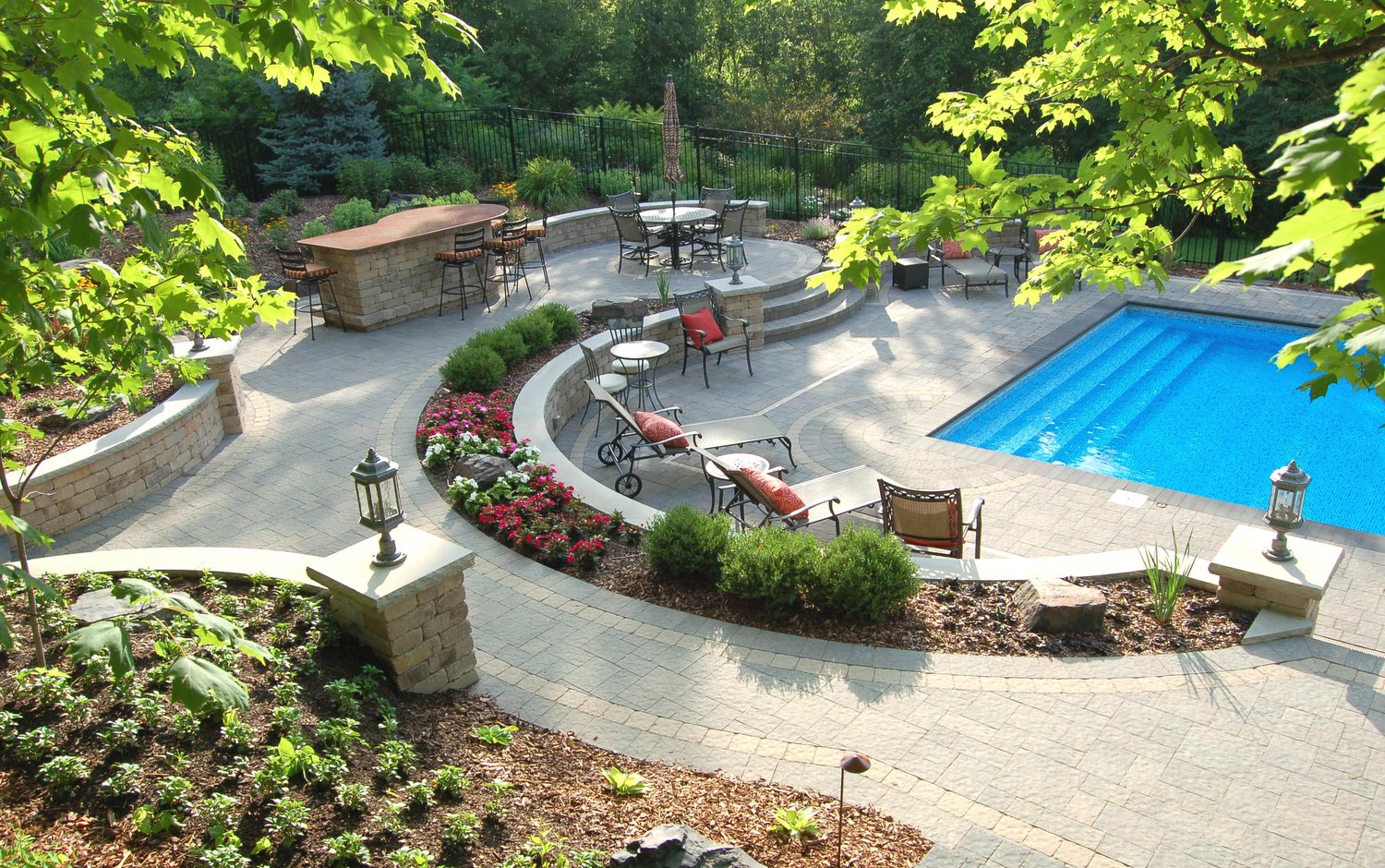
Balance is one of the key design principles in landscape architecture, and without it, design lacks a primary component. A strong sense of balance between hardscape and plant life can truly bring a design together and transform a formerly plain and uninteresting landscape into a beautiful oasis. Designing with vegetation is always a primary focus, but how does hardscape play a factor in balancing design?
In short, hardscape breaks up the potential monotony of vegetated plantings. It provides some structure to an organic flow of vegetated spaces. Hardscape can be defined as man-made structures or elements in a design, and in residential landscape design, materials such as brick, concrete, pavers, etc are common forms of hardscape. Hardscape colors, shapes, and patterns leave a designer with a number of design opportunities making it such a popular design element.
Concrete is the most commonly used hardscape, mainly for its versatility. It often comes poured, but it can come in a variety of colors. Brick more often than not, is manufactured as a bright red, and with a majority of planting emitting a contrasting color of green, the red will easily stand out in comparison to most other hardscape materials. While it can be used solely on its own, one interesting look that some residences are trying is using the brick red as an accent color. Designing a concrete walkway with neutral tones mixed with an outer brick edge, can soften the brick but also brighten the neutral concrete.
Other materials, such as flagstone or bluestone and natural stone tend to work well when designing patios. Hardscape can promote the design of patios, creating great outdoor living spaces without the woody appearance of a deck, for example. Stone walls can create enclosures, creating separate spaces within the landscape. Whether the hardscape becomes the home of an eating area for families or a fire pit gathering for a group of friends, the size, shape, and style are completely up to the user.
Aside from the hardscape, the plant selection and other softscape materials play just as important of a role in design. Selecting vegetation and hardscape of a corresponding color scheme is typically a good place to start. Think of vegetation possibly some mulching that can be used to soften hardscape edges. Or perhaps, you want the hardscape to stand on its own, and the use of seating and landscape planters can create an interesting design. Balancing hardscape and softscape with take some experimentation, but a successful design is always possible.

Leave a Comment